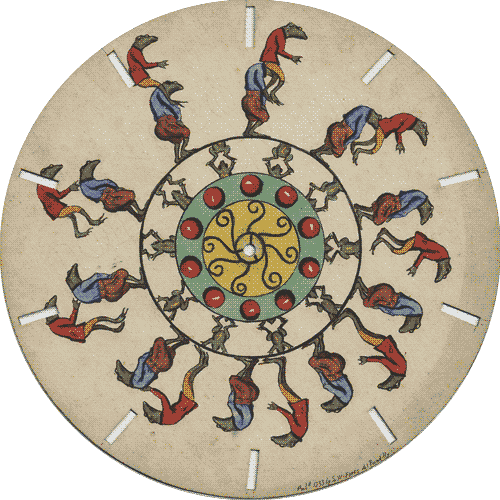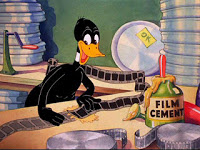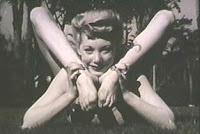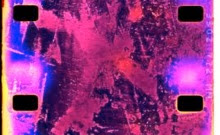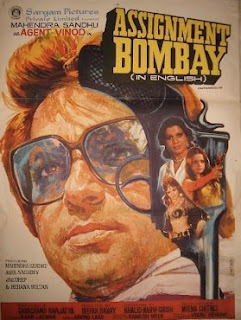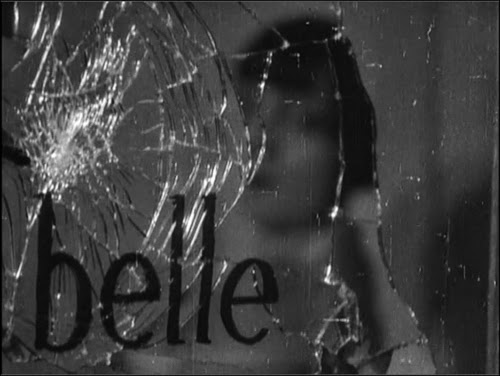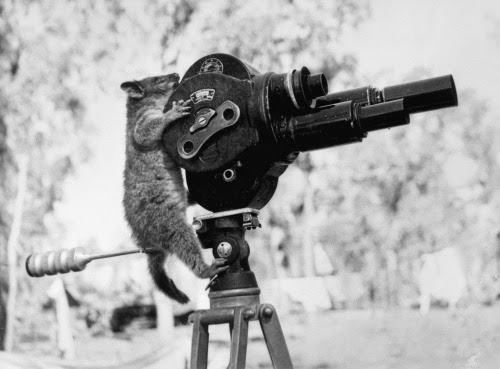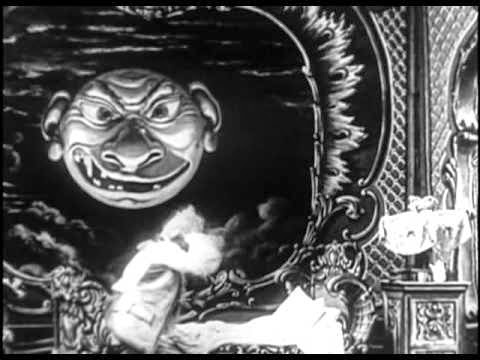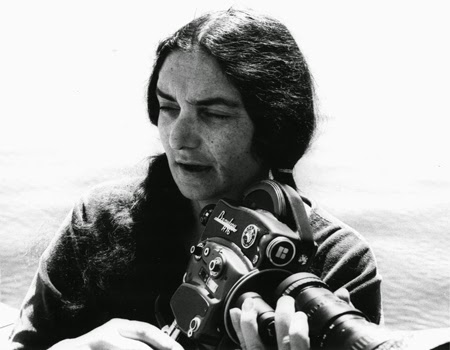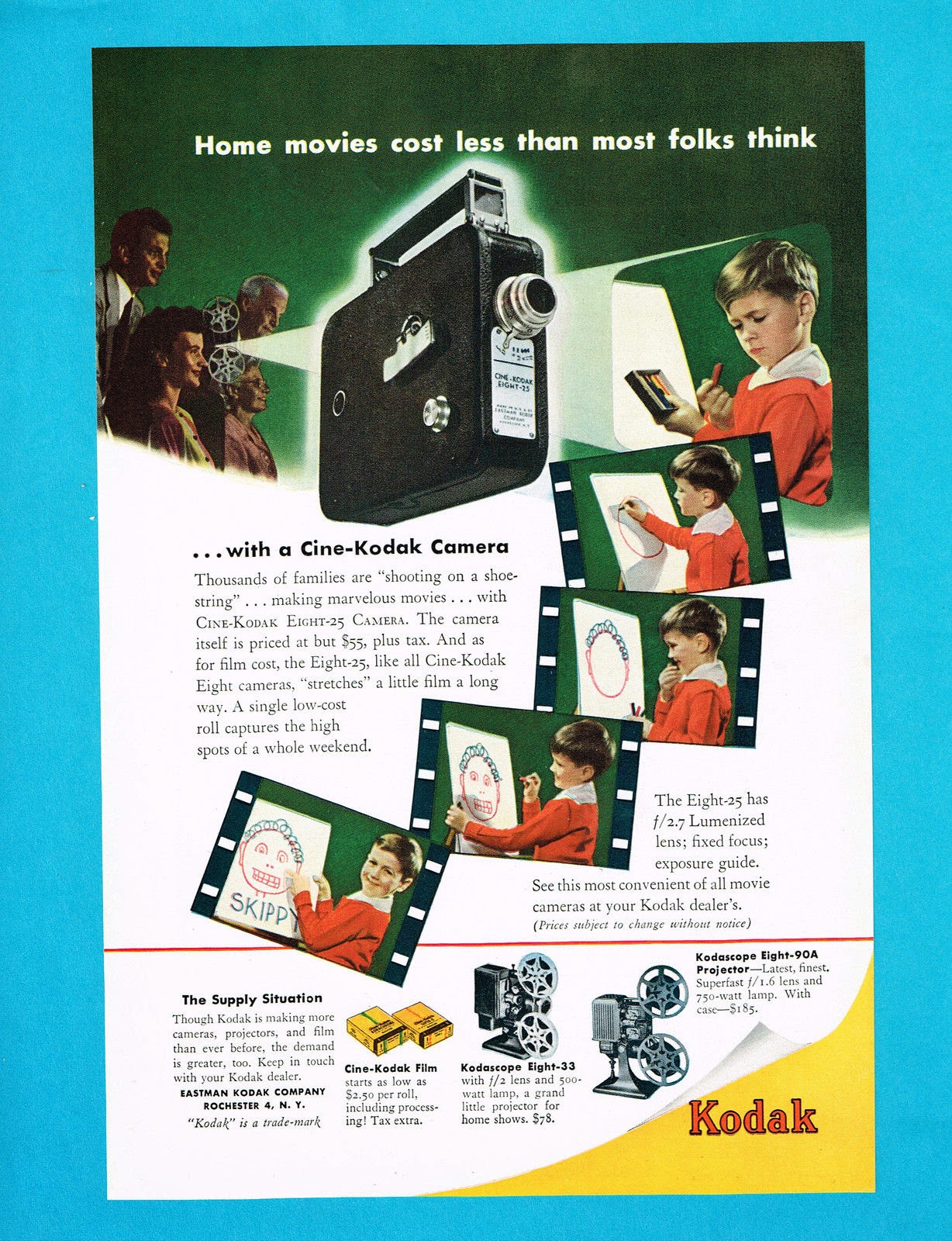Oddball Films presents Strange Sinema 83: Bizarre Cinema Histories, a monthly screening of new finds, old gems and offbeat oddities from Oddball Films’ collection of over 50,000 film prints. Tonight we present another offbeat look at the origins and bizarre expressions of cinema through historical inventions, experimental innovations and hand-made films throughout the ages. We start off with a fascinating documentary The Origins of the Motion Picture (1955) examining cinema history from Leonardo de Vinci to Thomas Edison featuring oddities such as the Thaumatrope, the Phenakistiscope, Muybridge’s Zoopraxiscope and more. We follow with the early cinema experiments of Georges Méliès in excerpts from Baron Munchausen’s Hallucinations (1911) and Tex Avery's Daffy Duck in Hollywood (1938) where our duckster editer makes movie mayhem by creating a masterpiece using stock footage to enrage his boss! Witness Camera Magic (1943), a rare curio by notorious oddball photographer Arthur “Weegee” Felig demonstrating a variety of camera techniques used to produce special effects. Moving on to the 70s, we take a cue from Stan Brakhage, Len Lye, and other avant-garde film makers in Michael and Mimi Warshaw’s How to Make a Movie Without a Camera (1972) and Yvonne Andersen’s Let’s Make a Film (1971), films which encourage kids to make beautiful movies by scratching and drawing directly on film and animating films using hinged cut-outs, clay, toys, painted film and live action. Another rare doc Richter on Film (1972) profiles Dadaist and abstract/avant garde filmmaker Hans Richter as he talks about his ground-breaking experimental films of the 1920's. Also included are Underground Film (1970), an exploration into ‘underground’ film through the eyes (and films) of California experimental filmmaker Chick Strand; Bombay Movies (1977), an inside look at the wild and extravagant world of Bollywood films in the 1970s; and L’Etoile de Mer or The Star of the Sea (1928), Man Ray’s surreal quasi-narrative of lust, sex, and thwarted desires. Plus! Rare avant garde shorts and excerpts.
Date: Friday, December 5th, 2014 at 8:00pm
Venue: Oddball Films, 275 Capp Street San Francisco
Featuring:
Origins of the Motion Picture (B+W, 1955)
This fascinating documentary describes the events leading to the perfection of motion pictures, and examines the technological development, from the theories of Leonardo Da Vinci to the inventions of Thomas Edison. The film examines reliefs on Indian temple walls, DaVinci’s Camera Obscura, the Magic Lantern, the many facets of moving image inventions from the Thaumatrope, or “wonder turner”, the Phenakistiscope, Muybridge’s Zoopraxiscope, the Zoetrope, Edison’s, Kinetograph and many more evolutionary moving image projection devices. Produced by the U.S. Navy in collaboration with The Library of Congress, The Smithsonian Institution, the National Archives, Thomas Alva Edison Foundation and the George Eastman House of Photography.
Excerpts from Baron Munchausen’s Hallucinations (B+W, 1911)
Georges Méliès was the magician par excellence of the early cinema, innovating constantly to bring cinema to its full expressive potential. In his rarely-seen version of Baron Munchausen, Méliès takes on the fantasies of the great traveling Baron, using new camera tricks and exquisite sets to bring the stories to life.
Daffy Duck in Hollywood (B+W, 1938, Tex Avery)
Watch Daffy Duck wreak havoc on a movie set by cutting and splicing together various clips into finished product of a movie contains nothing but newsreel titles and clips surrealist style. An anarchistic and avant garde masterpiece!
This rare curio by notorious oddball photographer Arthur “Weegee” Felig demonstrates a variety of camera techniques used to produce special effects with an ordinary 16mm motion picture camera without employing special equipment. A man moves to embrace a woman and we watch her vanish. On the beach a woman smiles while her decapitated head lies next to her. More offbeat scenes demonstrate tips and tricks for the amateur and professional alike. Wacky, weird and nothing like it in the entire Castle film collection this came from!
How to Make a Movie Without a Camera (Color, 1972)
Taking a cue from Stan Brakhage, Len Lye, and other avant-garde film makers, Michael and Mimi Warshaw encourage kids to make beautiful movies by scratching and drawing directly on film. Using just these simple techniques and a catchy soundtrack, the Warshaws show that it doesn’t take a big studio budget or an all-star cast to craft a movie that makes more sense than Inception.
“Michael and Mimi Warshaw’s film is a non-stop sampling of the wonders of found footage and hand-made movie techniques. The film incorporates techniques such as scratching, acetate inks, food coloring, felt tip pens, bleaching, rub-ons, and various stock or found footage elements creating an instructional yet experimental film. Famed avant garde filmmakers such as Len Lye, Stan Brakhage, and dadist Hans Richter created entire bodies of innovative, abstract cameraless film using direct physical techniques such as these.”
Richter on Film (Color, 1972)
The brilliant painter, Dadaist and abstract/avant garde filmmaker Hans Richter talks about his experimental films of the 1920's. Excerpts from Rhythm 2 (1921), Race Symphony (1928), and Ghosts Before Breakfast (1927) are included. Richter moved from Switzerland to the United States in 1940 and taught in the Institute of Film Techniques at the City College of New York.
While living in New York, Richter directed two feature films, Dreams That Money Can Buy (1947) and 8 x 8: A Chess Sonata in 8 Movements (1957) in collaboration with Max Ernst, Jean Cocteau, Paul Bowles, Fernand Léger, Alexander Calder, Marcel Duchamp, and others. In 1957, he finished a film entitled Dadascope with original poems and prose spoken by their creators: Hans Arp, Marcel Duchamp, Raoul Hausmann, Richard Huelsenbeck, and Kurt Schwitters. Richter was also the author of a first-hand account of the Dada movement titled Dada: Art and Anti-Art which also included his reflections on the emerging Neo-Dada artworks.
Underground Film (Color, 1970)
An exploration into ‘underground’ film through the eyes (and films) of California experimental filmmaker, Chick Strand, this documentary gives a close look into the life and work of one of the west coast’s (and Bay Area’s) most innovative independent filmmakers. Included among the interviews and footage of Strand working is a full-length version of her film, Anselmo, shot in Mexico in 1967. Lush color, layered images and intimate cinematography create an inimitable portrait of a musician friend and a tuba in Anselmo. Working in 16mm and Super 8mm, Chick Strand was one of a group of Bay Area filmmakers including Bruce Baillie, Gunvor Nelson, Dorothy Wiley, and Robert Nelson (to name a few) who established Canyon Cinema, San Francisco Cinematheque, and self published a journal of writings from and on filmmakers working in the area in the ‘60s and ‘70s. These filmmakers’ film work and efforts established a unique Bay Area community of distribution and exhibition for local film artists and have had an indelible impact on West Coast experimental and independent film aesthetics.
Bombay Movies (Color, 1977)
The entire output of the American film industry is the merest trickle in comparison with India, where the original Moguls release many times more films each year than the Americans can ever dream of. Studios in Bombay’s Hollywood, Bollywood, churn out a smorgasbord of musicals and exploitation films on a daily basis, serving the needs of India’s vast moviegoing public. Follow mega-star Vinod Khanna as he introduces American audiences to cinema, Indian-style.
L’Etoile de Mer or The Star of the Sea (B+W, 1928)
Man Ray’s surreal, dreamlike interpretation of a poem by Robert Desnos takes the viewer through a quasi-narrative of lust, sex, and thwarted desires (and star fish, or course). Using superimpositions, multiple exposures, dramatic set ups, and image-altering filters, Man Ray distorts and obscures his images to create his own unique visual poetry.
Let’s Make a Film (Color, 1971)
Photographed by Yvonne Andersen with narration by Dominic Falcone Shows how children between the ages of five and eighteen, working at the Yellow Ball Workshop, make animated films using hinged cut-outs, clay, toys, painted film, constructed forms, and live action. Follows one child through the entire process of making a short animated film with 16mm Bolex Camera on a tripod, and using rewinders and viewer as editing tools.
Curator's Biography:
Stephen Parr’s previous programs have explored the erotic underbelly of sex-in-cinema (The Subject is Sex), the offbeat and bizarre (Oddities Beyond Belief), the pervasive effects of propaganda (Historical/Hysterical?) and oddities from his archives (Strange Sinema). He is the director of Oddball Film+Video and the San Francisco Media Archive (www.sfm.org), a non profit archive that preserves culturally significant films. He is a co-founder of Other Cinema DVD and a member of the Association of Moving Archivists (AMIA) where he is a frequent presenter.
About Oddball Films
Oddball films is the film component of Oddball Film+Video, a stock footage company providing offbeat and unusual film footage for feature films like Milk, documentaries like The Summer of Love, television programs like Mythbusters, clips for Boing Boing and web projects around the world.
Our films are almost exclusively drawn from our collection of over 50,000 16mm prints of animation, commercials, educational films, feature films, movie trailers, medical, industrial military, news out-takes and every genre in between. We’re actively working to present rarely screened genres of cinema as well as avant-garde and ethno-cultural documentaries, which expand the boundaries of cinema. Oddball Films is the largest film archive in Northern California and one of the most unusual private collections in the US. We invite you to join us in our weekly offerings of offbeat cinema.
